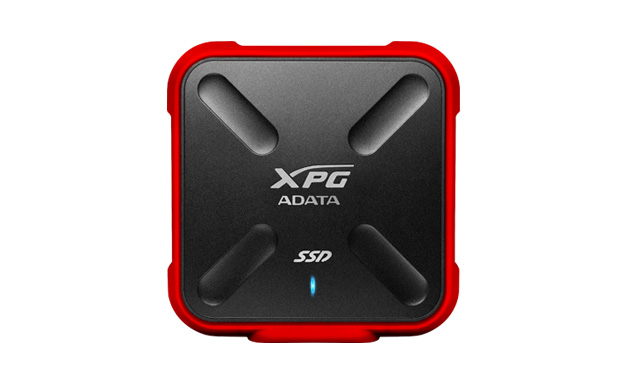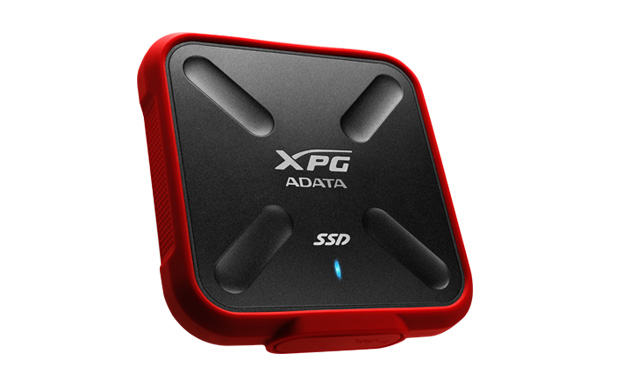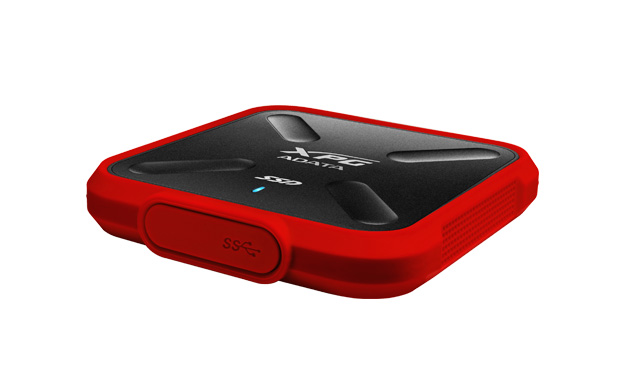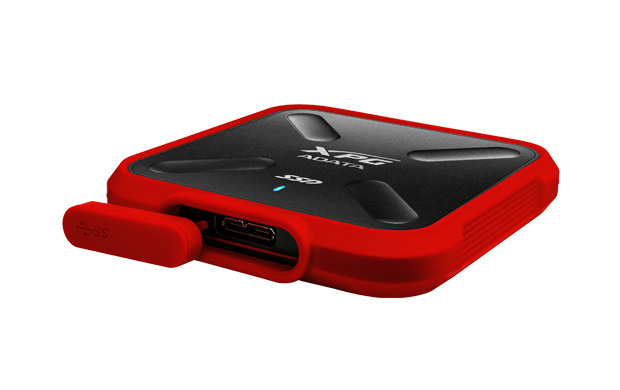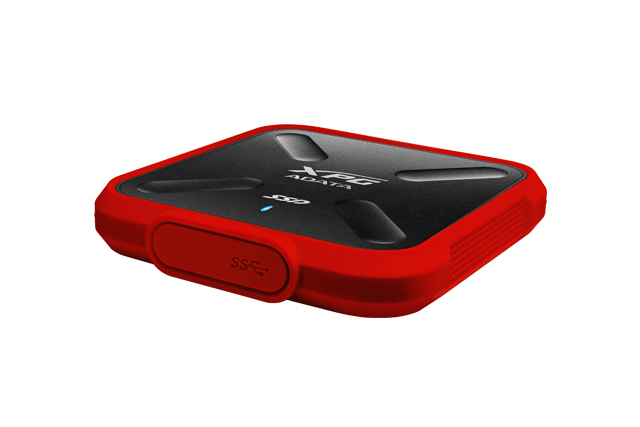
Of course, SSDs are also significantly more expensive than HDDs, and so they’re not the most economical solution for high-volume storage and for backup. That usually rules out SSDs as external drives, but ADATA wants to change all of that with its new XPG SD700X 1TB — which is also aimed directly at gamers looking to add storage to their consoles.
Adata is using 3D NAND in the XPG SD700X, which offers some advantages over older 2D NAND. First, because it stacks storage cells vertically and not just horizontally, 3D NAND promises to keep SSD capacities on the rise. Second, it brings advantages in cost and power efficiency while also offering high performance. Thus, Adata’s newest external drive offers up enhanced performance and reduce power consumption in a relatively small package.
The XPG SD700X also offers enhanced reliability via its U.S. Army MIL-STD-810G certification for being shot and drop resistant. In addition, the SSD meets IEC IP68 specs for being both waterproof up to an hour of immersion in 1.5m deep water and totally dust-tight. This makes the XPG SD700X a particularly good option as an external drive for anyone who needs to carry their storage into harsh conditions.
In terms of performance, the XPG SD700X utilizes a USB 3.1 Gen 1 connection, so it’s legacy-compatible while offering up to to 5GB/s transfer rates. The drive itself offers 440MB/s read and 430MB/s write speeds, making it not only many times faster than an HDD but also compatible with fast internal SSDs. The drive comes in a bright red case that gives an obvious nod to gamers.
Adata describes the device as follows:
“The XPG SD700X is the first gaming-styled IP68 external SSD designed to expand console storage. It’s completely dust-tight and highly waterproof, delivering up to 1TB in plug n play for Xbox One and PS4. With quality 3D NAND plus DRAM cache and SLC mode, the SD700X reaches 440MB/s read and write – over 4X faster than internal Xbox One/PS4 HDDs. That means games load faster and run smoother, giving gamers the double benefit of space and speed. Plus, it’s PC and Android compatible as a bonus.”
If you’re looking for a ton of storage in a robust, reliable, and high-performance external drive, then you’ll still have to wait a while for the XPG SD700 to show up in various retail outlets. When it does arrive, it will be available in 256GB, 512GB and 1TB versions complete with USB Type-A cable and a 3-year limited warranty.
